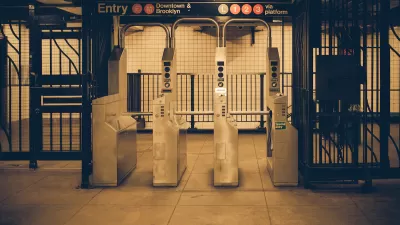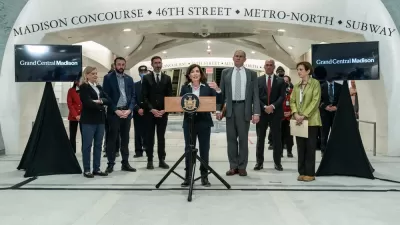When it comes to meeting the transit needs of millennials, real time information about train arrivals is as important as the transit itself. This is one of the key findings of a New York MTA survey conducted to inform strategies for the future.
Matt Flegenheimer writes about how the New York Metropolitan Transportation Authority is planning to meet future transit needs. It "constructed a detailed profile of the millennial — broadly defined as a traveler born after 1980".
The authority said that much of its research into millennial trends came from rider surveys. In his presentation, (William Wheeler, the authority’s director of special project development and planning) noted that one of the top priorities for young passengers was up-to-the-minute train information “so they can make quick decisions.”
MTA is already meeting that need for the Metro-North Railroad. "(A)s part of a package of service improvements announced on Monday, (it) will invest $1.7 million per year to add “real-time customer information displays” at all of its stations in New York State by 2020."
In his companion, on-line piece, Flegenheimer writes about other aspects of the "$18 million package of service improvements — the second time in two years that the authority has enhanced or restored service that had been cut in 2010 amid a budget shortfall."
“For the second year in a row, the state has invested in significant enhancements and expansions to our state’s transit system that will improve the experience of the eight million commuters who use the M.T.A.,” Gov. Andrew M. Cuomo said in a statement.
Non-millennials will be pleased to see that other, non-technology improvements include more frequent bus, subway, and commuter service.
FULL STORY: M.T.A. Ponders Transit for a New Generation

Maui's Vacation Rental Debate Turns Ugly
Verbal attacks, misinformation campaigns and fistfights plague a high-stakes debate to convert thousands of vacation rentals into long-term housing.

Planetizen Federal Action Tracker
A weekly monitor of how Trump’s orders and actions are impacting planners and planning in America.

San Francisco Suspends Traffic Calming Amidst Record Deaths
Citing “a challenging fiscal landscape,” the city will cease the program on the heels of 42 traffic deaths, including 24 pedestrians.

Defunct Pittsburgh Power Plant to Become Residential Tower
A decommissioned steam heat plant will be redeveloped into almost 100 affordable housing units.

Trump Prompts Restructuring of Transportation Research Board in “Unprecedented Overreach”
The TRB has eliminated more than half of its committees including those focused on climate, equity, and cities.

Amtrak Rolls Out New Orleans to Alabama “Mardi Gras” Train
The new service will operate morning and evening departures between Mobile and New Orleans.
Urban Design for Planners 1: Software Tools
This six-course series explores essential urban design concepts using open source software and equips planners with the tools they need to participate fully in the urban design process.
Planning for Universal Design
Learn the tools for implementing Universal Design in planning regulations.
Heyer Gruel & Associates PA
JM Goldson LLC
Custer County Colorado
City of Camden Redevelopment Agency
City of Astoria
Transportation Research & Education Center (TREC) at Portland State University
Jefferson Parish Government
Camden Redevelopment Agency
City of Claremont





























